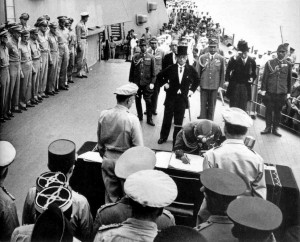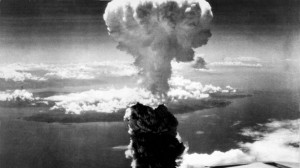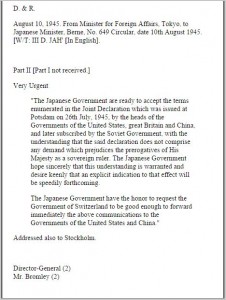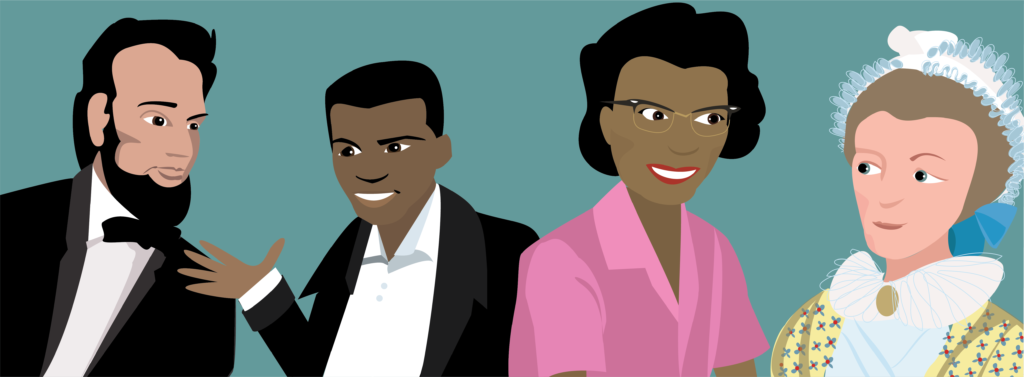Why the Japanese government surrendered
As with some aspects of science, many facets of history are not definitive. Over time, new evidence is discovered, reviewed and verified, altering past understandings in ways that seldom go so far as to disprove a detail, but rather result in a more nuanced appreciation.
The surrender of Japan underscores the previous statement in that many key actions were the result of decisions made by groups of people with multiple, often conflicting agendas and by erroneous assumptions by one group regarding the intentions of another. Both the Japanese and American governments, it was revealed years later, held inaccurate views of the other nation’s intentions, and therefore, made tragic decisions based on these misunderstandings.
Democratic forms of government are all exercises in a unequally distributed, collective faith. When tested by a severe economic crisis such as the Great Depression, that faith often falters. Those with power, those with the loudest of political voices, those with the least confidence in democracy cluster to both decry the plodding nature of democracy and yearn for a form of government decidedly more inclined to safeguard their power and act favorably upon the sound of their voices. To lessen the chance of dissent, nationalism is dispensed, taking one of two forms, isolationism, still compatible with democracy, as was the case with the United States, or militarism, which eschews democracy. Fascism is inevitable, as was the case with Germany, Italy and Japan. Of these three, only Japan was comprised of a single ethnicity, a common culture reaching back over two millennia.

Unrestrained militarists
By the early-1930s, Japan’s militarist factions saw the country’s economic anxiety develop into a strong yearning for decisiveness in government at any price. Fueled by the political tool of nationalism, the militarists began to usurp Japan’s constitutional democracy.
As a result of Japan’s victory in the Russo-Japanese War of 1904-05, Japan acquired Port Arthur, the Manchurian port on the Yellow Sea. The city was the rail head of the Japanese-owned South Manchuria Railway which ran north through the Kwantung, (now Liaodong), Peninsula. An army garrison was stationed there to protect the railroad and other industrial interest in the leased territory comprising the southern end of the peninsula. Known as the Kwantung Army, the force attracted ultra-nationalists officers who would later support the coups of the early to mid-1930s.
In 1931, without the slightest consultation with, let alone approval by the Japanese government, the Kwantung Army unilaterally seized Manchuria, establishing there the Japanese puppet state of Manchukuo. In what would become a half-dozen years of rule by assassination, moderate Prime Minister Osachi Hamaguchi was shot by member of an ultra-nationalist secret society. While he survived, his subsequent health problems effectively ended his role as prime minister
Largely in response to the London Naval Treaty, signed in March of 1932 by the U.K., the United States, France, Italy and Japan, limiting warship tonnage, two coup attempts by separate militarist faction resulted in a four year period of political assassination. In what became known as the May 15 Incident, Prime Minister Inukai Tsuyoshi was murdered by young Army officers and naval cadets, this in response to Tsuyoshi’s role in limiting the size of Japan’s navy. (This was the second murder of a Japanese prime minister in nine years.)
By the mid-1930s, Japan had seen two failed, military coups attempted in response to moderation and acts of political compromise. The second of these was accompanied by a dramatic rise in political assassination carried out by young, ultra-nationalist officers devoted to a senior admiral or general. One prime minister was murdered, as were enough cabinet ministers and elected officials that by the late 1930s, an atmosphere of political terror led to the virtual domination of government by the armed forces of which many minister appointments required sanctioning by the military. The bitter disagreements between the army and navy served as the lone example of political opposition, the Japanese Army being the more radical, and also, the most dominant.
After Imperial Japan went to war with Western nations in December of 1941, political parties were replaced by a single “party” system dominated by the military. Until the surrender, members of the government were subject to arrest by the army’s secret police, an unenviable set of circumstances for national leaders favoring an end to the war. While we can never know with certainty, this peril faced by opposition to the fanatics, especially those within the army, may well have also applied to the Showa Emperor.
Crumbling delusions of glory
It was under these circumstances that, on February 14 of 1945, Emperor Hirohito summoned Supreme Council of the Direction of the War, (often referred to as The Big Six), to discuss the continuation of the war and defense of the home islands once invaded. The six counselled for continuing the war, but former Prime Minister Fuminaro Konoe, who, as the Lord Keeper of the Privy Seal, the Emperor’s closest adviser, urged the Emperor to begin the process of ending the war through negotiation. Konoe’s fear was of a communist uprising within the Japanese population which was beginning to starve.
So it was that, at that February meeting, the outcome was to continue the war. Recollections of the meeting and of subsequent private comments by Emperor Hirohito make clear the rationale for staying the course was a deeply held hope for a tennozan, or great victory as promised by the most hawkish among the military’s senior leaders.
Three weeks later, Operation Meetinghouse was launched against Tokyo.
On the first day of April, (U.S. time), the Japanese island of Okinawa was invaded by the largest invasion armada in history. For Japan, April would experience another blow, one that would ultimately force the empire’s hand four months later.
Vain hopes of peace via the Russians
In April 1945, the Soviet Union informed Japan they would not be renewing the Soviet-Japanese Neutrality Pact upon its expiration in 1946. This stunning development, combined with the invasion of Okinawa prompted the government of Koiso Kuniaki to resign.
Upon selection as the new prime minister, Kantar Suzuki privately instructed Foreign Minister Shigenori Togo to secure peace as quickly and as expediently as possible, adding the clarification, “as to diplomacy, you have a free hand,” (The Fall of Japan, by Keith Wheeler, p.-66, Time-Life Books WWII series).
Within days of Germany’s surrender on 8 May 1945, the Supreme Council of the Direction of the War met for four days to discuss how the Soviet Union might be persuaded to enter into a new relationship with the Japanese empire as a means of helping to end the war, thus heading off an invasion by the Soviets. (Collected writings of Richard Storry, p-165) Unbeknownst to the Japanese government was Stalin’s promise, made at Yalta, to declare war on Japan within three months of Germany’s defeat.
The allied intelligence arm’s accomplishment in breaking the Japanese diplomatic code before, and again during the war, is surpassed in magnitude only by the profound failure of the Japanese military to detect the gaping breach of security. American and British intelligence agencies read the Japanese diplomatic, (Purple), code. This, along with direct reports from diplomatic contacts abroad revealed to Allied governments the existence of Japanese officials, both diplomatic and within the Imperial Palace, who were seeking ways to end the war.
Hirohito’s influence revealed
On June 22, Emperor Hirohito again met with the Big Six, the Prime Minister, the Foreign Minister, Lord Keeper of the Privy Seal and several senior military leaders. He began the meeting with a less-than-subtle statement to those gathered.
“We have heard enough of this determination of yours to fight to the last soldiers. We wish that you, leaders of Japan, will strive now to study the ways and the means to conclude the war. In doing so, try not to be bound by the decisions you have made in the past.”
It was agreed Foreign Minister Shigenori Togo would actively seek the help of the Soviet Union in mediating with the Allies an end to the war. Attempts by Japan’s Ambassador to Moscow, Naotake Sato, to meet with Soviet Foreign Minister Molotov were repeatedly put off as ordered by Stalin. Frustrating communications between Sato and Foreign Minister Shigenori Togo were read by Allied intelligence agents who reported to, among others, the U.S. State Department of Japan’s efforts to end the war and prevent a Soviet invasion. In less than a month, however, the doomed effort to secure the Soviet’s help would become moot due to events in Japan’s defeated former ally, Germany.
Ultimatum from Potsdam
On July 27, 1945, a fateful message was broadcast in Japanese to frequencies received in Japan. The content of what is now known as the Potsdam Declaration, (also Proclamation), named after the location in Germany where Churchill, Stalin and America’s new president, Harry S. Truman, were still then meeting, was an ultimatum calling on Japan to surrender unconditionally or face “prompt and utter destruction.”
The utimatum made no mention of the Emperor or the continuation of the throne. However, the message did specifically state, among other points, three provisions that may well have been misinterpreted by the Japanese government, thereby prolonging the war.
- Item 6 – There must be eliminated for all time the authority and influence of those who have deceived and misled the people of Japan into embarking on world conquest, for we insist that a new order of peace, security and justice will be impossible until irresponsible militarism is driven from the world.
- Item 10 – We do not intend that the Japanese shall be enslaved as a race or destroyed as a nation, but stern justice shall be meted out to all war criminals, including those who have visited cruelties upon our prisoners. The Japanese Government shall remove all obstacles to the revival and strengthening of democratic tendencies among the Japanese people. Freedom of speech, of religion, and of thought, as well as respect for the fundamental human rights shall be established.
- Item 12 – The occupying forces of the Allies shall be withdrawn from Japan as soon as these objectives have been accomplished and there has been established in accordance with the freely expressed will of the Japanese people a peacefully inclined and responsible government.
Of the 13 points that comprised the Potsdam Declaration, these three, in particular, suggested not only Emperor Hirohito would not be permitted the throne, but that he would likely face prosecution and execution as a war criminal. The effect of such consequences would mean the complete elimination of Kokuti, the very identity of all Japanese.
For President Truman, there was understandable public pressure to insist upon unconditional surrender. Americans were in no mood to negotiate terms with those who launched the sneak attack on Pearl Harbor and routinely committed atrocities upon POWs, not to mention hundreds of thousands of Asian civilians. Still, Truman’s insistence on unconditional surrender would also equate to continued loss of American lives as the price for intransigence on securing Japan’s surrender. There were notable figures inside the Truman Administration as well as within the military who disagreed with the strict unconditional surrender position. For them, the matter was not about saving face, but of saving American lives by hastening the surrender of Japan by stipulating the Showa Emperor would be retained and immune from prosecution.
Upon receiving the demands, the Suzuki Government debated a response to the Allies. In one of the most tragic instances of miscommunication, Suzuki worded his government’s employing the term mokosatsu, which could be translated to mean essentially, no comment or kill with silences, as in ignore. While Suzuki intended his message to convey the former, American newspapers and the government interpreted the term to mean the latter, thus setting in motion the atomic bombing of Hiroshima. (The Fall of Japan, by Keith Wheeler, p.-73, Time-Life Books WWII series).
Atomic bombs and the Soviet invasion of Manchuria

As we know, on 6 August, (U.S. time, 7 August Japan time), an atomic bomb was detonated above the city of Hiroshima. Japanese military officials responded by sending a team of top physicists to Hiroshima to confirm of refute American claims the weapon was atomic. In Tokyo, there was no formal discussion as to surrender.
The following evening, Soviet Foreign Minister Molotov informed the Japanese Ambassador his country would declare war on Japan the following day. On 8 August, (U.S. time), the U.S.S.R. invaded Manchuria, smashing the remaining units of the war-depleted Kwantung Army.
That same day, the Allies, having received no message of surrender from Japan, Nagasaki was largely destroyed by an even more powerful second nuclear bomb. Later that day, a meeting of the Supreme Council of the Direction of the War was convened. Whatever the outcome of what was then a committee evenly divided as to accepting the terms of the Potsdam Declaration, it was only the Imperial Cabinet, not the Big Six, who had the authority to surrender. Hours after the Supreme Council of the Direction of the War met on August 9, Prime Minister Suzuki convened his cabinet.
Desperate hours for a deadlocked government
For the three hawks of the Supreme Council of the Direction of the War and for those like-minded on the cabinet, surrender was still unthinkable, with a minority of these still clinging to the irrational hope the war could still be won after repelling at great cost an allied invasion. For the doves, however, one issue above all others stood in the way of surrender – the preservation of the Showa Emperor, and thus, Kokuti, the essence of what it meant to be Japanese, no doubt also an overriding concern shared by the hawks.
A vote on the matter of accepting the terms of the Potsdam Declaration was taken by the cabinet, with 12 voting to accept the terms, 3 against, and one undecided. After hours more of fruitless debate, Suzuki ended the cabinet meeting. Together with Foreign Minister Togo, Suzuki left to inform the Showa Emperor of the deadlock.
After hearing the not unexpected result of the meetings and receiving advice from Marquis Kido, Lord Keeper of the Privy Seal, the Showa Emperor Hirohito did something extraordinary. He summoned the cabinet, the Supreme Council of the Direction of the War and several former prime ministers to an Imperial Conference. The meeting took place in a secure bunker beneath the Imperial Palace with ten minutes remaining for the same day on which Nagasaki was bombed.
The details of what followed from the Imperial Conference are well documented. Few four-day periods in world history are filled with more cascading pairs of shifting options and monumental choices upon which hung the lives of hundreds of thousands. What remains uncertain to this day, and as I’ve concluded, unknowable, is the true motivation behind the Showa Emperor’s actions during those four days and the many explanations and interpretation’s as to how best to evaluate Hirohito’s culpability in his nation’s wartime actions.
The Showa plays his hand
As the several first-hand accounts relate, the Imperial Conference began in the final hour of 9 August and quickly devolved into intransigent arguments between the hawks, led by War Minister Korechika Anami, and doves, including Lord Keeper of the Privy Seal Kido, Foreign Minister Shigenori T?g? and Prime Minister Suzuki . Somewhere around 2:00 a.m., in a dramatic breach of protocol bordering on blasphemy, Prime Minister Suzuki approached the Showa requesting the Emperor’s direct input as a means to end the deadlock.
Without mentioning the word surrender, the Showa Emperor, according to accounts made early during the American occupation, a period in which it was by no means certain as to whether or not the victors would try Hirohito as a war criminal, was swift in issuing his unequivocal desire to end the war by accepting the terms in the Potsdam Declaration.
I have given serious thought to the situation prevailing at home and abroad and have concluded that continuing the war can only mean destruction for the nation and prolongation of bloodshed and cruelty in the world. I cannot bear to see my innocent people suffer any longer. …
I was told by those advocating a continuation of hostilities that by June new divisions would be in place in fortified positions [at Kuj?kuri Beach, east of Tokyo] ready for the invader when he sought to land. It is now August and the fortifications still have not been completed. …
There are those who say the key to national survival lies in a decisive battle in the homeland. The experiences of the past, however, show that there has always been a discrepancy between plans and performance. I do not believe that the discrepancy in the case of Kuj?kuri can be rectified. Since this is also the shape of things, how can we repel the invaders? [He then made some specific reference to the increased destructiveness of the atomic bomb]
It goes without saying that it is unbearable for me to see the brave and loyal fighting men of Japan disarmed. It is equally unbearable that others who have rendered me devoted service should now be punished as instigators of the war. Nevertheless, the time has come to bear the unbearable. …
I swallow my tears and give my sanction to the proposal to accept the Allied proclamation on the basis outlined by the Foreign Minister.
There were emotional pleas by the hawks to continue the war, but soon after making the fateful statement, the Showa Emperor departed. During the next several hours each member of the cabinet as well as those of the Supreme Council of the Direction of the War obediently voted to accept the terms of the Potsdam Proclamation and then affixed their signatures to documents attesting as much. Diplomatic dispatches were cabled to the neutral countries of Sweden and Switzerland for conveyance to the United States with the lone equivocation the Emperor and his throne be retained.

The conditional reply ran the risk of being rejected by the Allies, thus subjecting Japan to the likelihood of yet another nuclear attack, perhaps upon Tokyo itself. It was during this period the lives of hundreds of thousands, both American and Japanese, hung in the balance of what events might develop.
Inspired wording in fateful exchange
As errors in translations of the Potsdam Declaration as well as to its response by the Japanese government had already led to tragic consequences, misinterpreted assumptions as to the fate of the Emperor, and therefore Kokuti, delayed the Allied response to the Japanese condition of surrender. In an inspired act of diplomatic rhetoric, the American acceptance of Japan’s surrender was worded in such a way as to satisfy those adamant about unconditional surrender, while satisfactorily assuring the Japanese of the Showa’s continued role in a post-war Japan.
From the moment of surrender, the authority of the Emperor and the Japanese Government to rule the state shall be subject to the Supreme Commander of the Allied powers, who will take such steps as he deems proper to effectuate the surrender terms.
Two days later, on 13 August, during the war’s last Imperial Conference, the Showa ordered both the government and the General Staff to comply with his wish Japan surrender. Reluctantly, more so in some cases than in others, all signed the final acceptance. The following day, War Minister Anami committed suicide.
Death throws of fanatics, then peace
Late that night, a well publicized military coup was attempted by fanatical officers and roughly one thousand followers hoping to prevent the Showa’s recorded message from being transmitted the next day instructing his subjects to accept surrender. Known as the Ky?j? Incident, the revolting soldiers came dangerously close to destroying the pressed recordings of the Showa’s message. It remains unknown whether or not Hirohito was himself at risk of assassination during the failed coup, which was put down by palace guards.
The following day, 14 August 1945, subjects throughout the Japanese Empire heard, in most cases, for the first time, the sound of their emperor’s voice. Despite several reported exceptions, (some never officially confirmed by U.S. sources), the Japanese military obeyed the Showa Emperor’s command. Of the many emotional responses displayed by the Showa’s subjects, the number of suicides that followed the message of capitulation is unknown, but not insignificant.
On 2 September 1945, aboard the USS Missouri anchored in Tokyo Harbor, the final surrender ceremony between Japan and the Allied forces brought an end to WW II.
What I learned writing about the Japanese surrender
Overlapping the surrender by the Japanese government were the extemporaneous first moves of the Cold War. In Asia, American forces occupied Japan under what many consider the inspired direction of Supreme Commander Douglass MacArthur among whose first tasks was to sanitize the reputation of the Showa Emperor and his family so as to deflect calls from the United States and other allies to prosecute Hirohito and a number of family members for war crimes. This task MacArthur did with the deft talent of 1918 Earlham College graduate, Brigadier General Bonner Fellers who proved a master of obfuscation in his vague exoneration of the Emperor and his family.
Fellers, whose post-retirement involvement in politics included the John Birch Society and active support of Barry Goldwater, and MacArthur, both demonstrated strong anti-communist credentials, were acutely aware of the likely scenarios posed by a prosecution of the Showa. With Japan’s population on the very brink of starvation, an ensuing communist revolution following the breakdown of a national identity was, as former Prime Minister Konoe had warned in February 1945.
All accounts as to the Showa Emperor’s role in waging war given by Japanese cabinet members and top military personnel has to be viewed as, at best, tainted by the respondent’s desire to save by exoneration their leader and distorted by American investigators to achieve the political expediency of safeguarding Japan from the Soviet sphere of communist influence.
Even more recent attempt to reinterpret the Showa’s culpability in war crimes tend to be so passionate that standards of evidence demanded by scholarly work are found wanting, despite strong circumstantial evidence in support of condemnation.
The perplexing nature of examining the Showa’s level of participation in waging war in Asia is also complicated by nature of translating documents into the language of the researcher and by the on-going discovery, translation and release of new primary sources, such as September 2014’s latest release of more than 12,000 pages of the Showa’s records. It is likely such discoveries will continue for perhaps decades, each new revelation changing, if nothing else, the shade of all past interpretations.


Comments
One response to “Why the Japanese government surrendered”
Mark: This is simply amazing. Good job!